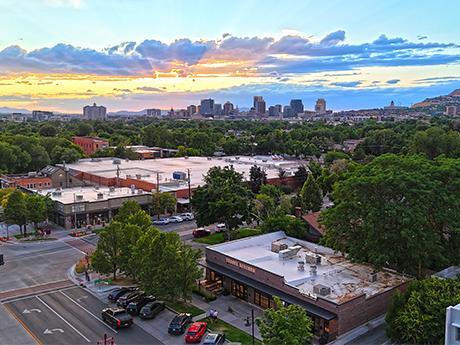— By Brian Anderson of CBRE —
Utah’s retail market is shaped by its young population and large households, driving demand for big box stores and quality consumer brands. Utah has the youngest median age of any state in the U.S. by nearly four years, and the largest median household size.

Our retail real estate market mirrors these realities. Large-box grocers and membership warehouses dot the landscape, creating gravity points that draw junior boxes, shops and restaurant users to these neighborhoods. Utah’s household incomes continue to rise, while the per capita income remains average. This has led to a concentration of quality — though not luxury — consumer brands in most retail centers.
Despite challenges in construction and finance markets, Utah’s ongoing housing expansion is pushing box users and grocers to open new locations. The Salt Lake and Provo MSAs are expected to see several new big box and large grocery stores, mostly in outlying communities, after a quiet 2023 and 2024. Smaller-format grocers focused on organic food are also in permitting stages in established communities. These new locations will spark competition for restaurant and shop users.
Health-conscious brands are expected to take space in desirable centers as 2025 progresses. This is partly due to rapid inflation pricing out traditional and local shop operators. The Church of Jesus Christ of Latter-day Saints’ closure of Temple Square in downtown Salt Lake City since 2019 for seismic upgrades has reduced foot traffic. The anticipated reopening in 2026 and open house in 2027 will likely improve visitation and retail activity in the area. Inquiries for space are already increasing for late 2025 and early 2026.
When open, Temple Square vies with Zion National Park as the most visited attraction in the state. The retail and restaurant scene anticipates marked improvement when that block reopens.
Overall, Utah’s retail markets continue to thrive and attract national capital. This trend is expected to continue as the economy stabilizes in the coming quarters.
— By Brian Anderson, Vice President of CBRE. This article was originally published in the March 2025 issue of Western Real Estate Business.


